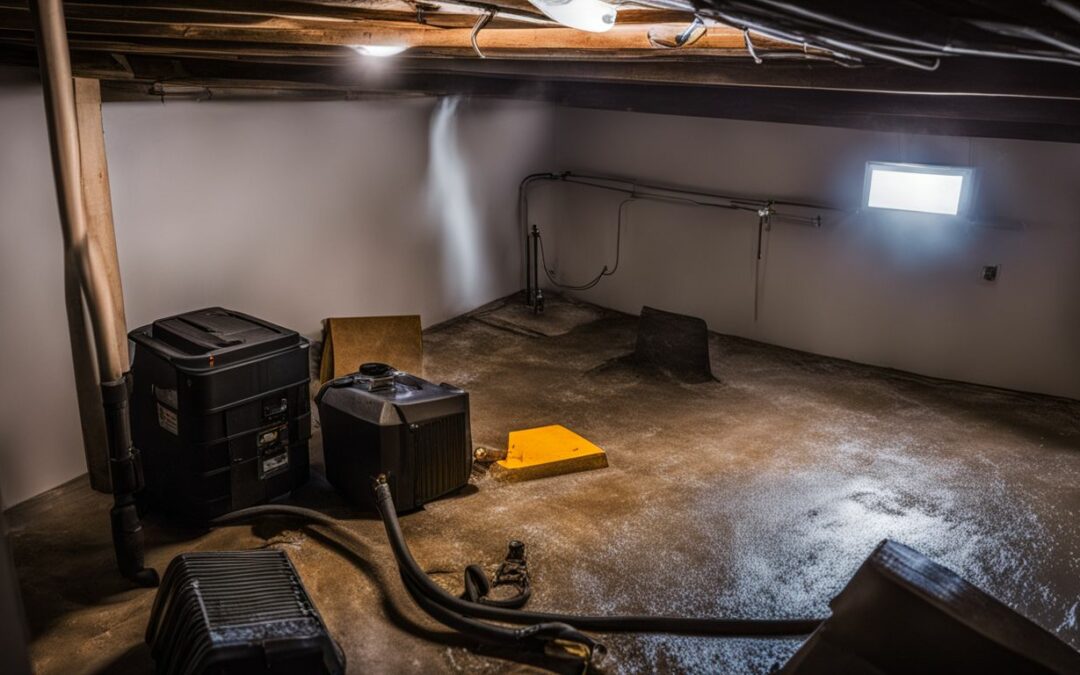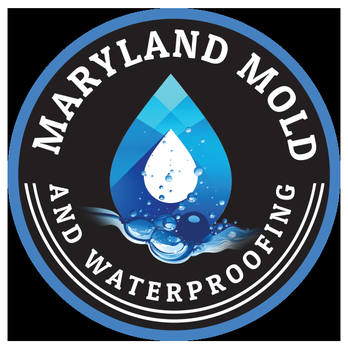Many homeowners deal with the challenge of keeping their crawl spaces dry. A wet crawl space can damage your home’s foundation and lower its value. This article will guide you through waterproofing your crawl space to protect your home.
Stay tuned for essential tips.
Key Takeaways
- Professional inspections help find problems in your crawl space, like mold or leaks, so you can keep it dry and safe for your home.
- Sealing concrete walls and entry points stops water from getting into your crawl space, protecting the foundation of your house.
- Proper drainage systems, like sump pumps and French drains, prevent water buildup that can damage your home’s structure.
- Regular ventilation and insulation in your crawl space reduce moisture and prevent harmful mold growth.
- Keeping up with maintenance tasks ensures a dry crawl space, which is essential for a healthy living environment.
The Importance of Waterproofing a Crawl Space
Keeping your crawl space dry and waterproof is crucial for maintaining a healthy home environment. It stands as the first line of defense against a range of potential problems, from structural damage to poor indoor air quality, ensuring your home remains safe and comfortable.
Protects the foundation of your home
Waterproofing your crawl space is a critical step in safeguarding the foundation of your home. This process involves installing a waterproof membrane or vapor barrier, along with proper drainage systems such as sump pumps and dehumidification solutions.
These measures prevent water from seeping into the foundation, which can cause severe structural damage over time.
Erosion and settling are significant threats to any home’s foundation, but with effective moisture control strategies like crawl space encapsulation and exterior waterproofing, you mitigate these risks.
Not only does this protect the physical integrity of your house, but it also maintains its value by preventing issues that could lead to costly repairs or foundational instability down the line.
With professional guidance from companies like Maryland Mold & Waterproofing, ensuring your home’s long-term health becomes a manageable task.
Prevents moisture buildup
Protecting the foundation of your home is a crucial step in maintaining its integrity, and equally important is preventing moisture buildup through effective crawl space waterproofing.
This essential process stops water from seeping into your crawl space, which can lead to higher humidity levels inside your home. High humidity invites a host of problems such as mold growth, musty odors, and even pest infestations, all of which pose risks to both the structure of your house and the health of its inhabitants.
Implementing moisture control strategies such as sealing foundation cracks and improving drainage around your property plays a significant role in dampness control. Conducting thorough waterproofing inspections allows homeowners to identify potential issues before they escalate into costly damages.
By focusing on humidity prevention and water damage prevention within the crawl space, you actively contribute to preserving the overall well-being of your living environment. This proactive approach not only helps in eliminating existing moisture-related concerns but also acts as a preventive measure against future problems related to excessive dampness under your home.
Improves air quality
Keeping moisture at bay not only safeguards your home’s foundation but also leads directly to cleaner, healthier air inside. Waterproofing a crawl space plays a pivotal role in warding off mold, mildew, and fungus infestations, which are notorious for degrading indoor air quality.
This protective measure ensures that the air circulating through your living spaces is free from these harmful contaminants.
Implementing regular maintenance and ensuring proper ventilation systems are in place can further enhance the benefits of waterproofing by actively managing humidity levels within the crawl space.
Such efforts prevent moisture buildup effectively, creating an inhospitable environment for pests and reducing the likelihood of pest-related pollutants infiltrating indoor air. As a result, homeowners enjoy a boost in overall air purity, contributing significantly to a healthier living environment.
Signs of a Waterproofing Issue in Your Crawl Space
Identifying early signs of waterproofing problems in your crawl space is crucial for maintaining a healthy home. Catching these issues quickly can prevent more severe damage and ensure the longevity of your house’s structure.
Musty odors
Musty odors in your crawl space are a clear indicator of a waterproofing problem. This unpleasant smell often signals the presence of mold, mildew, and fungi, which thrive in damp conditions.
Increased humidity levels below your home create the perfect environment for these organisms to grow, leading to that distinctive musty scent. Ignoring this sign can lead to more serious issues, including water damage and deteriorating air quality inside your living spaces.
Taking action against moisture is crucial for maintaining a healthy home environment. Solutions like basement waterproofing and crawl space encapsulation can effectively control humidity and prevent mold growth.
Addressing the root cause of musty odors not only protects your foundation but also improves overall air quality. Transitioning now from identifying signs like foul smells to understanding another common issue—mold growth—is essential for homeowners aiming to safeguard their properties.
Mold growth
Following the trail of musty odors in your crawl space often leads to a more pressing concern: mold growth. This issue signifies that moisture, condensation, and humidity have created an ideal environment for fungus and mold to thrive.
Ignoring signs of dampness can lead to widespread water damage and rot, compromising the structural integrity of your home.
To combat mold growth, ensuring proper ventilation is crucial. Without adequate air flow, spores multiply quickly, affecting air quality throughout your entire home. By addressing leaks and seepage early on, homeowners can prevent these harmful organisms from taking hold.
Tackling this challenge head-on not only preserves the health of your living space but also safeguards the well-being of everyone inside it.
Standing water
After mold growth, another critical indicator of waterproofing problems in your crawl space is standing water. This issue not only elevates the humidity levels but also contributes to a musty odor that can permeate your home.
It’s vital for homeowners to understand that puddles of water in the crawl space signal a severe lack of proper drainage and moisture control. Ignoring this sign can lead to more extensive damage over time, affecting the overall healthiness of their living environment.
Addressing standing water requires immediate action to prevent further complications such as structural damage or an increase in mold and mildew. Implementing effective crawl space drainage solutions plays a crucial role in resolving this issue by ensuring that water accumulation doesn’t occur.
Homeowners must seek professional assessments to pinpoint the exact causes and implement corrective measures swiftly. Taking these steps will safeguard against excess humidity, protect your home’s foundation, and ensure a healthier living space free from dampness and odors associated with wet crawl spaces.
How to Properly Waterproof Your Crawl Space
Discover the essential steps to effectively waterproof your crawl space and safeguard your home from moisture-related issues, ensuring a healthier living environment for you and your family.
Inspection and assessment
Experts recommend beginning the crawl space waterproofing process with a thorough inspection and assessment. This critical first step involves checking for existing issues like water puddles, signs of mold growth, efflorescence, wood rot, deteriorating insulation, and evidence of pests that can undermine your home’s foundation and overall health.
A professional evaluation pinpoints these problems, setting the stage for effective moisture control strategies.
Hiring waterproofing contractors to conduct this inspection guarantees an expert eye on complex challenges such as foundation repair needs and identifying the best locations for sump pump installation or vapor barrier installation.
They assess the drainage system around your property to ensure water moves away from your home effectively. This initial phase lays a solid foundation for subsequent measures like sealing entry points, improving ventilation, and installing insulation to maintain a dry crawl space.
Sealing concrete and entry points
Sealing concrete walls forms a solid barrier against moisture, making it an essential step in crawl space waterproofing. Applying a high-quality concrete sealer can significantly reduce water intrusion, protecting the foundation of your home from potential damage.
This process not only helps in maintaining the structural integrity of your house but also plays a crucial role in pest prevention by closing off entry points that critters could use to invade your home.
To ensure lasting protection, doors and other access points require proper sealing as well. Use durable materials designed for outdoor exposure to block any gaps that might allow moisture or pests inside the crawl space.
Regular maintenance and inspection are key to keeping these seals effective over time. By taking these steps, you create a stronger defense against dampness and infestation problems.
With the foundations secure and entryways tightly sealed, improving drainage becomes the next critical stage in fully waterproofing your crawl space.
Improving drainage
After ensuring the crawl space is effectively sealed, focusing on improving drainage becomes essential. Properly grading soil away from your home’s foundation prevents water accumulation that could lead to moisture problems in the crawl space.
Additionally, installing a sump pump and French drain system can significantly reduce the risk of flooding by redirecting surface water away from your property. These measures not only enhance foundation waterproofing but also contribute to maintaining a dry and healthy crawl space environment.
Installing vent covers and selecting the right moisture barrier further fortify your home against water damage. By addressing these key areas, homeowners can effectively prevent excess moisture buildup, safeguarding their home’s foundation and improving overall air quality inside.
Prioritizing drainage improvement as part of your crawl space encapsulation project ensures long-term protection against potential water damage and contributes to a healthier living environment.
Ventilation and insulation
Ensuring proper ventilation in your crawl space is critical for moisture control, preventing condensation and thwarting mold growth. By promoting good air circulation, you significantly reduce the risk of dampness that can damage your home’s foundation and overall structure.
Installing vents or using fans helps maintain airflow, keeping humidity levels in check.
Insulating the crawl space plays a vital role in maintaining an appropriate temperature within this area and throughout your home. Using materials such as fiberglass batts or rigid foam boards not only regulates temperature but also minimizes moisture intrusion from the ground and outdoor air.
This step is crucial for reinforcing your waterproofing efforts, making it harder for water vapor to penetrate and cause issues within the crawl space.
Maintenance tips for a dry crawl space
Keeping your crawl space dry involves regular checks and maintenance. Seal doors and access points with weatherstripping, silicone caulk, or acrylic latex caulk to block water intrusion.
Use expandable spray foam for larger gaps that might allow moisture or pests inside. These steps not only keep the area dry but also deter unwanted critters from making a home under yours.
Inspect your ventilation systems frequently to ensure they are functioning correctly, as proper air flow is crucial in preventing moisture buildup. Foundation cracks should be patched and sealed promptly to avoid water seepage.
Regularly maintaining sealants can significantly reduce the risk of water damage and contribute to a healthier living environment by keeping the crawl space dry and well-ventilated.
Crawl Space Waterproofing – Get Started Today!
Crawl space waterproofing safeguards the foundation of your home, blocks moisture buildup, and enhances air quality. These steps are not only practical but easy to implement, ensuring a healthier living environment.
Have you checked your crawl space lately? Consider these strategies for immediate improvements in moisture control and air purity. Remember, a dry crawl space contributes significantly to the structural integrity of your home.
For further information or assistance, seeking professional advice can offer tailored solutions. Let’s make every effort to ensure our homes stand strong and healthy – starting from the ground up. Contact us today to get started!
FAQs
1. What is crawl space waterproofing?
Crawl space waterproofing involves methods and materials used to prevent water from entering the crawl space under your home.
2. Why do I need my crawl space waterproofed?
Waterproofing your crawl space prevents moisture problems, mold growth, and structural damage to your home.
3. How can I tell if my crawl space needs waterproofing?
Signs you may need crawl space waterproofing include musty smells, visible mold, wet insulation, or standing water in the crawl space.
4. What are some common methods of crawl space waterproofing?
Common methods include sealing vents and doors, using a vapor barrier on the ground, installing a sump pump, and ensuring proper drainage around your home’s foundation.
5. How often should I check my crawl space for water issues?
It’s wise to inspect your crawl space for water issues at least once a year or after significant rainfall events.
John Rivers is the guiding force behind Maryland Mold and Waterproofing, specializing in comprehensive waterproofing and mold remediation services. With a focus on protecting buildings from the damaging effects of water and mold, John has established the company as a leader in creating safe, dry, and healthy living environments. His commitment to using advanced techniques and materials ensures effective solutions for every project. Maryland Mold and Waterproofing is dedicated to educating clients on the importance of moisture control and mold prevention, offering expert advice and services to address and prevent these issues effectively.



